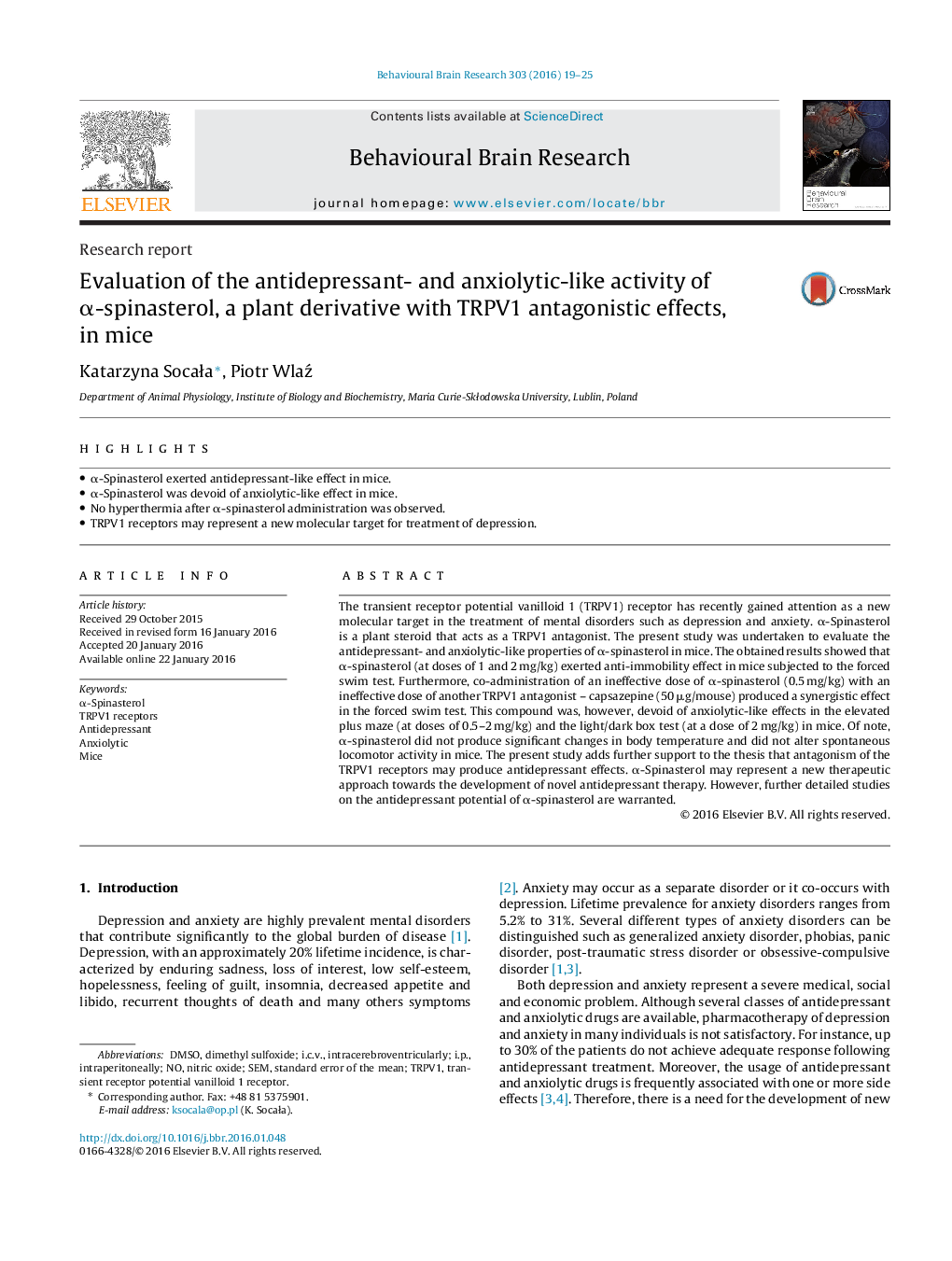| Article ID | Journal | Published Year | Pages | File Type |
|---|---|---|---|---|
| 4312221 | Behavioural Brain Research | 2016 | 7 Pages |
•α-Spinasterol exerted antidepressant-like effect in mice.•α-Spinasterol was devoid of anxiolytic-like effect in mice.•No hyperthermia after α-spinasterol administration was observed.•TRPV1 receptors may represent a new molecular target for treatment of depression.
The transient receptor potential vanilloid 1 (TRPV1) receptor has recently gained attention as a new molecular target in the treatment of mental disorders such as depression and anxiety. α-Spinasterol is a plant steroid that acts as a TRPV1 antagonist. The present study was undertaken to evaluate the antidepressant- and anxiolytic-like properties of α-spinasterol in mice. The obtained results showed that α-spinasterol (at doses of 1 and 2 mg/kg) exerted anti-immobility effect in mice subjected to the forced swim test. Furthermore, co-administration of an ineffective dose of α-spinasterol (0.5 mg/kg) with an ineffective dose of another TRPV1 antagonist – capsazepine (50 μg/mouse) produced a synergistic effect in the forced swim test. This compound was, however, devoid of anxiolytic-like effects in the elevated plus maze (at doses of 0.5–2 mg/kg) and the light/dark box test (at a dose of 2 mg/kg) in mice. Of note, α-spinasterol did not produce significant changes in body temperature and did not alter spontaneous locomotor activity in mice. The present study adds further support to the thesis that antagonism of the TRPV1 receptors may produce antidepressant effects. α-Spinasterol may represent a new therapeutic approach towards the development of novel antidepressant therapy. However, further detailed studies on the antidepressant potential of α-spinasterol are warranted.
